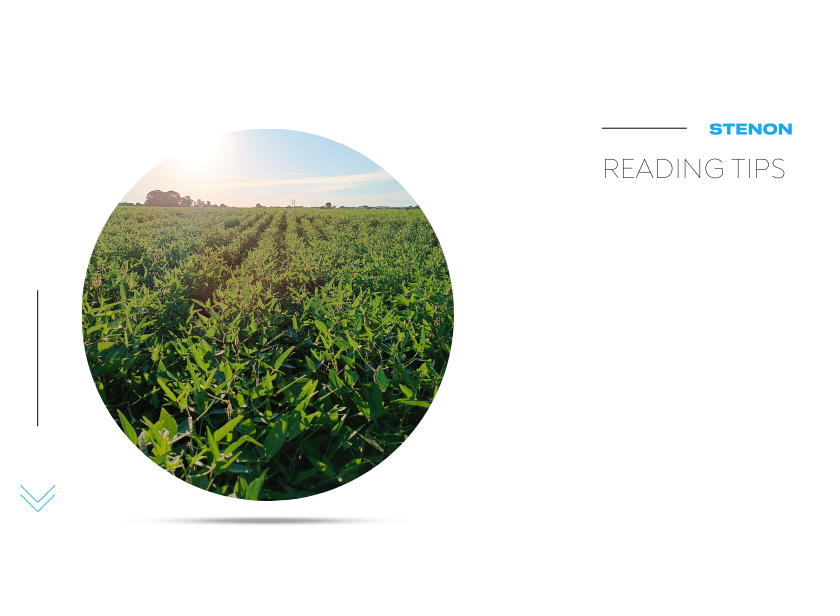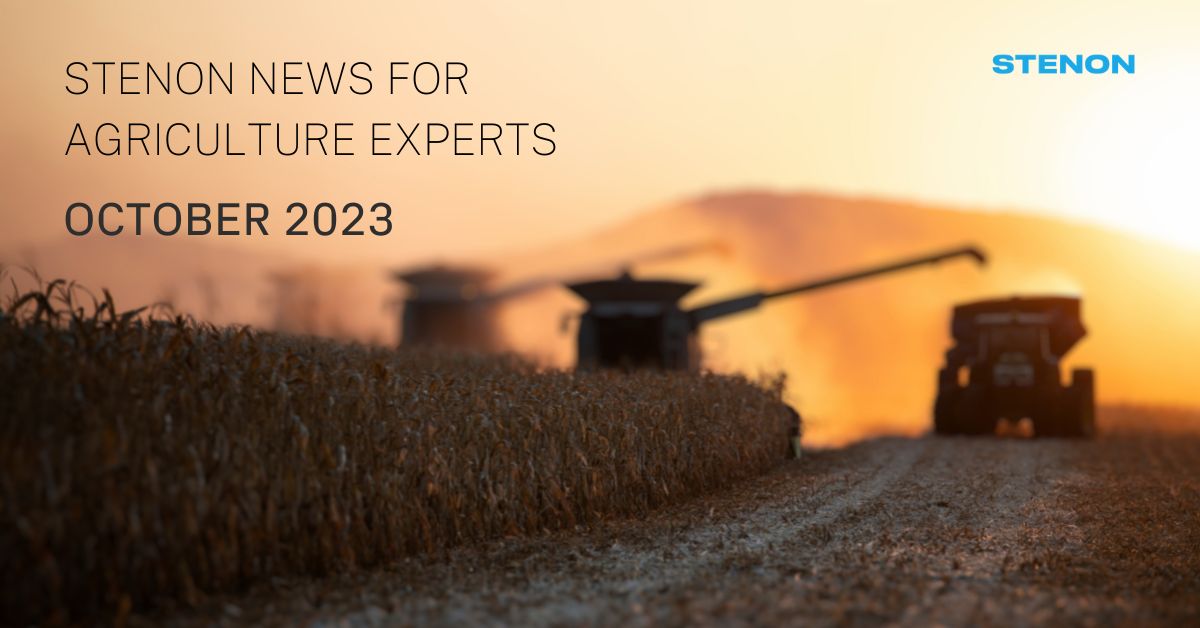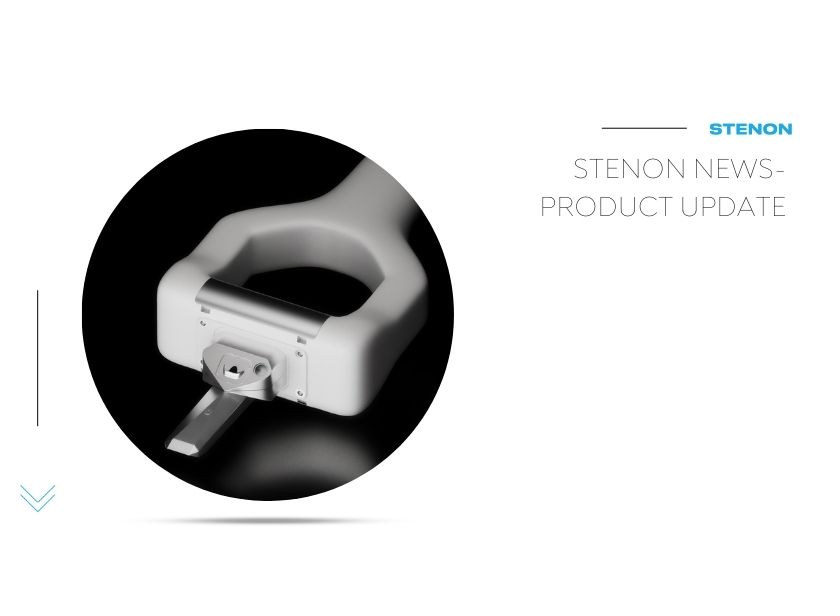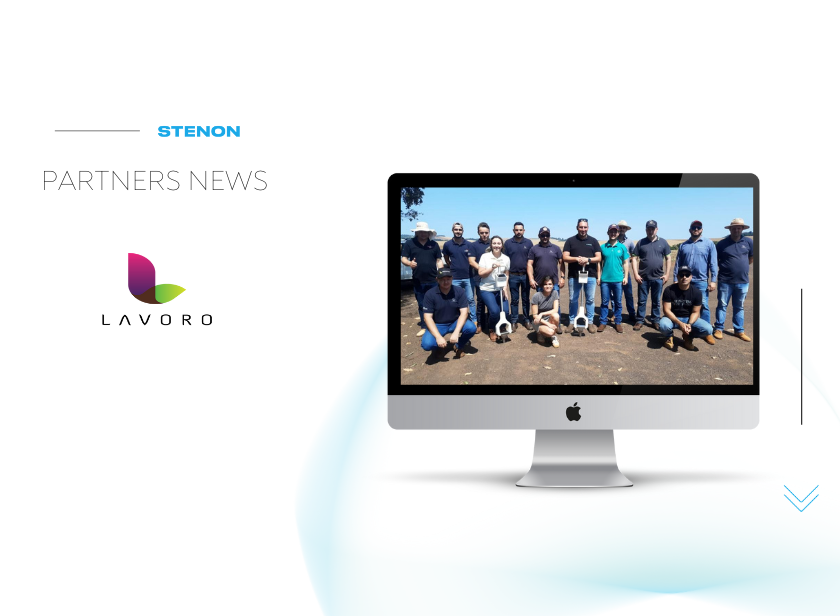„It is only the farmer who faithfully plants seeds in the Spring, who reaps a harvest in the Autumn,“ said B. Forbes, and we are here at this important time of the year to help you improve your operational efficiency. We aim to accomplish this not only by providing innovative technology solutions for agriculture businesses but also by sharing valuable insights on optimizing your fertilization strategies, highlighting the advantages of the latest breakthroughs in soil analysis, and presenting real-world examples of how cost savings and increased yields can be achieved.
This article is jam-packed with news about recent updates of Stenon’s solution, practical fertilizer recommendations and intriguing studies conducted in various regions.
Stay tuned and enjoy the read!
DE version
PT version
RUS version
Stenon FarmLab is more robust than ever! The latest software update has greatly enhanced the FarmLab’s functionality by increasing the processing speed and improving the data processing of the measurements carried out even under tough weather and environmental conditions. For example, compared to the previous version, dry or very dark soils can now be analyzed with 30-40% fewer measurement attempts.
This impressive enhancement was achieved due to the optimization of the FarmLab’s algorithm that is now capable of extracting enough information and producing accurate results even from lower-quality sensor-read data. This has also resulted in less outlier measurements raised by the FarmLab in general.
Show case from Kazakhstan

We have already shown how easy it is to operate our soil measurement device, FarmLab, in the field: you simply go to the field, plug the device into the soil, and the measurement is done. But the real magic happens in Stenon’s WebApp, where users can view and analyze the results. Our partner in Kazakhstan, Eurasia Group AG, has released the second part of the FarmLab overview video dedicated to the analysis of the results in Stenon’s WebApp.
In this video, the agriculture expert from Eurasia AG demonstrates how easy it is to create a farm and fields. Thanks to the integration of Stenon’s WebApp and the John Deere system, users can even export their fields from John Deere to the WebApp. All measurements carried out on that field can then be viewed and analyzed directly in the WebApp. For further analysis, you can export the results in the preferred format (Excel, CSV, PDF), and based on this data, nutrient maps can be created and uploaded directly to John Deere FMS, allowing for precise fertilizer application.
Why is this so great? In the example discussed in the video, it has been revealed that thanks to the data received from FarmLab’s measurements, the recommendation to the farmer was to apply 1806 kg less N-fertilizer for a 78 ha farm. The savings achieved with this case are already significant, but when expanding this practice to the rest of the fields, the economic impact will be even more impressive.
„Today, we can go to the field, just a day before seeding, and by tomorrow, we can already share the results with the farmer along with fertilizer recommendations. This is especially important for nitrogen, as its levels in the soil can change significantly.“
states the Eurasia Group AG agriculture expert.
Please note that this video is available only in the Russian language and covers functionalities specific to the Kazakhstan region.
How Stenon’s technology helps enhance agriculture in Brazil
We previously announced the successful completion of the calibration campaign in the Sao Paulo and Parana regions of Brazil, along with our exclusive partnership with Lavoro in Parana. To ensure the best adoption of our technology, in September, our team, led by CEO Niels Grabbert, visited Parana and conducted a comprehensive 360-degree training program for experts from Lavoro subsidiaries. In total, we visited 6 different locations and trained over 60 people. During these training sessions, we not only demonstrated how to operate FarmLab but also presented real examples of how the data we receive from measurements taken in recently seeded fields can help farmers reduce fertilizer input.
If you’re still curious about our technology, please watch this short 1-minute video providing an overview of our soil measurement solutions developed specifically for the Brazilian region:
You can also learn more about our technology on our webpage here.
Agricultural news spanning the globe

This German article discusses how targeted post-harvest management can significantly reduce nitrate leaching during the following winter season. It emphasizes the importance of analyzing the current operational status to identify areas with high nitrogen leaching. Implementing efficient and often straightforward measures based on this analysis can contribute to improved water protection. Notably, even small improvements can make a significant difference in safeguarding water resources. This article can be of particular interest to agronomists and farmers because it offers practical insights into minimizing nitrogen pollution and enhancing water conservation on agricultural lands.
The easiest way to obtain real-time data on nitrogen is by conducting soil analysis with Stenon’s FarmLab. This allows agronomists to measure nitrogen levels anywhere in the field and obtain immediate results. Contact us to learn more.
In Brazil, safrinha crop rotation is very common. This article in Portuguese reveals the findings of a study on nitrogen optimization for safrinha crops. The study aimed to assess the impact of nitrogen dosage and sources on yield production. The results were surprising: increasing the nitrogen dosage in the corn sowing furrow, using Ureia as fertilizer, had a detrimental effect on yield production. Conversely, better results were obtained when applying less nitrogen fertilizer, albeit of a different type.
In the case studies conducted by Stenon, it was discovered that our customers had a sufficient amount of plant-available nitrogen in the soil, as indicated by measurements using Stenon’s FarmLab. As a result, we recommended reducing fertilizer input compared to the farmers‘ previous practices. Additionally, we considered yield production before and after implementing our nitrogen input reduction recommendations. The study’s results demonstrated that a 20% reduction in nitrogen fertilizer input resulted in similar or even higher yields. For some customers, this led to savings of more than $20,000 and demonstrated yield optimization.
Contact us to learn more about our real-time soil analysis solution.
This article in the Russian language delves into the topic of precision agriculture and the benefits of targeted fertilizer application. As highlighted by our partner in Kazakhstan, Eurasia Group AG, for fields with diverse soils, applying different input rates can lead to significant cost reductions. There are different ways to measure the N-level for precision agriculture, but so far, we are very proud that Stenon’s technology is the fastest and most precise solution for that.
About Stenon
Since its founding in 2018, Stenon Gmbh, based in Potsdam, Germany, has become the global market leader in real-time digital soil data that is especially beneficial for agronomists. With its sensor- and cloud-based mobile measuring device FarmLab, Stenon provides agriculture businesses with essential data to make optimal and sustainable cultivation decisions, boost yield, crop quality and soil health while saving money on inputs.
More about Stenon at www.stenon.io



